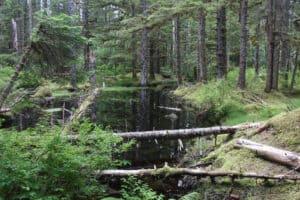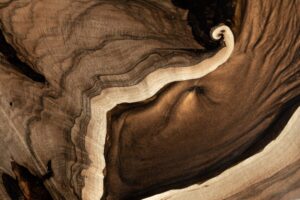There are a number of techniques used in Bonsai tree cultivation, but do you know how to defoliate a Bonsai tree? What even is defoliation, and is it necessary for the overall health and wellness of your Bonsai tree? Whether you are just beginning your Bonsai tree journey or are more experienced and want some tips, defoliation is an intricate process you may encounter.
In this article, we will go over everything you need to know about defoliation and what it means to defoliate a Bonsai tree. We’ll give you some of the types of Bonsai trees that can benefit from defoliation as well as a step-by-step guide for how to best accomplish this task. Let’s get started and talk all about this important Bonsai tree pruning activity now!
What is Defoliation?
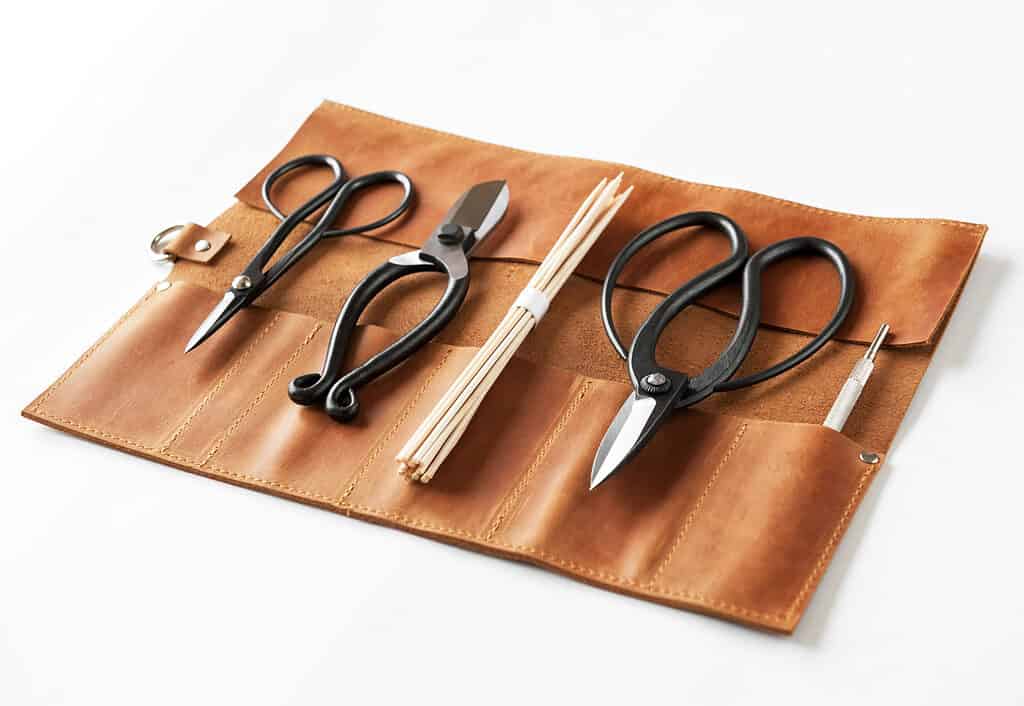
Depending on what you want to accomplish using this method, defoliation helps redirect the energies of your tree.
©Olena Antonenko/Shutterstock.com
As the name implies, defoliation involves the partial or full removal of foliage from your Bonsai tree specimen. Depending on what you want to accomplish using this method, defoliation helps redirect the energies of your tree. By trimming your Bonsai tree after it has produced new growth, you are encouraging the tree to grow new, smaller leaves. Bonsai trees don’t naturally grow small leaves, so this may be something you are interested in cultivating for yourself!
You may also choose to defoliate one section of your tree in order to encourage other sections to grow more. This is a great technique to try if your tree is producing leaves in a lopsided manner. The process for accomplishing this isn’t as simple as busting out the garden shears and hacking away at your miniature tree, however. In fact, a delicate hand is necessary when it comes to defoliation!
When Should Bonsai Tree Defoliation Occur?
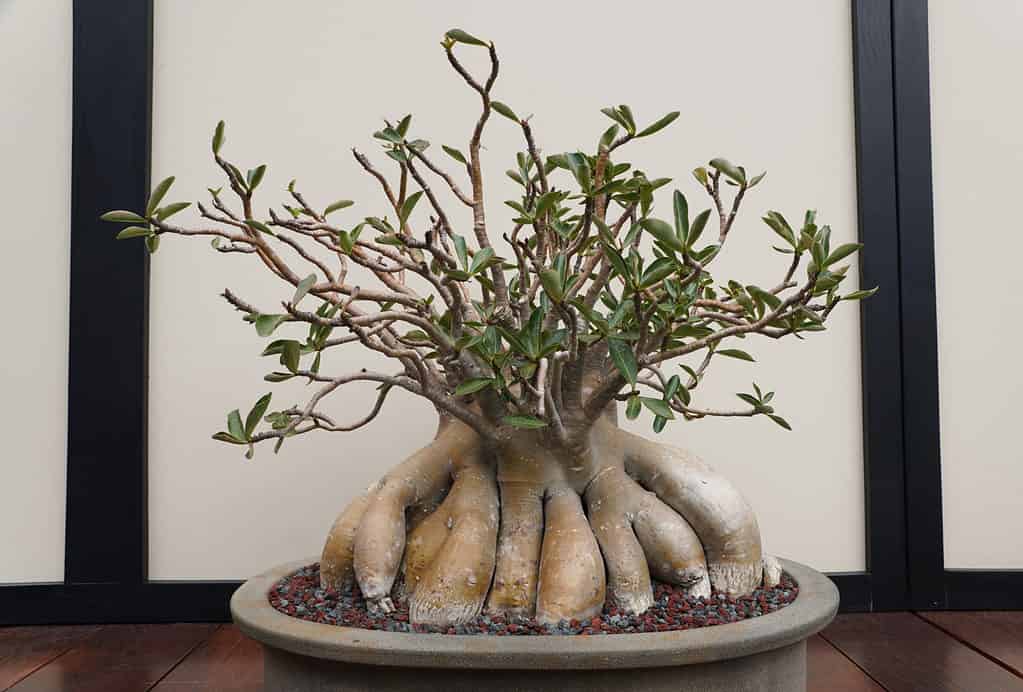
A tree that has recently been repotted or is still wired and being trained should not get defoliated, as this will only weaken it.
©Khairil Azhar Junos/Shutterstock.com
The first and most important thing to consider when attempting to defoliate a Bonsai tree is the time of year. You do not want to start defoliation during the spring, fall, or winter months. Instead, opt for a summer defoliation plan, preferably in June or July, depending on the species of tree you are working with.
Once your tree has produced new leaves or growth and has ceased growing or producing more leaves, it’s time to defoliate! Make sure that your tree is healthy and capable of handling this pruning process. A tree that has recently been repotted or is still wired and being trained should not get defoliated, as this will only weaken it.
Speaking of species, not all Bonsai trees can be defoliated. There are a number of types of shrubs and trees that won’t benefit from this process. To ensure that you don’t defoliate the wrong type of tree, here are some types of Bonsai trees that can handle this intricate process.
Types of Bonsai Trees that Benefit from Defoliation
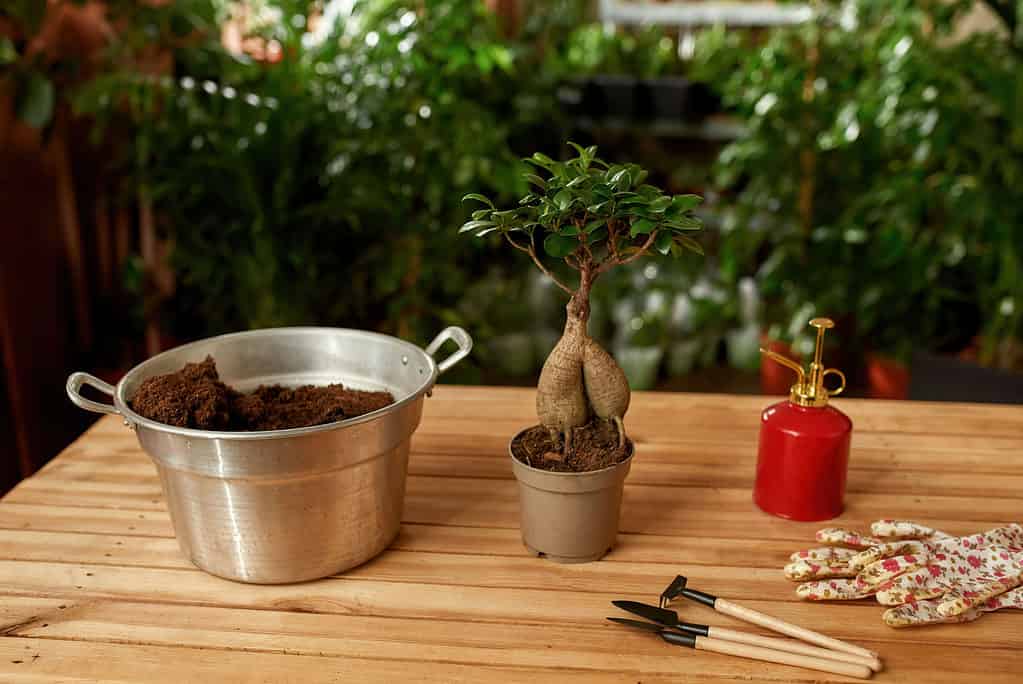
You don’t have to completely defoliate your entire specimen in order to encourage smaller leaf growth.
©BAZA Production/Shutterstock.com
When it comes to the types of Bonsai trees that need defoliation, whether for their overall health or a stylistic choice, you should limit defoliation to deciduous trees. There are even some deciduous trees that don’t do well when defoliated, so make sure to do your research before trimming! Some trees that do well when defoliated include:
- All ficus species
- Oak trees
- Hawthorn trees
- Maple trees
- Beech trees
- Birch trees
Be sure to avoid defoliating your evergreen coniferous trees as well as your fruit Bonsai trees. Most of these tree types don’t have the energy and won’t survive the process!
How to Defoliate a Bonsai Tree: Step by Step
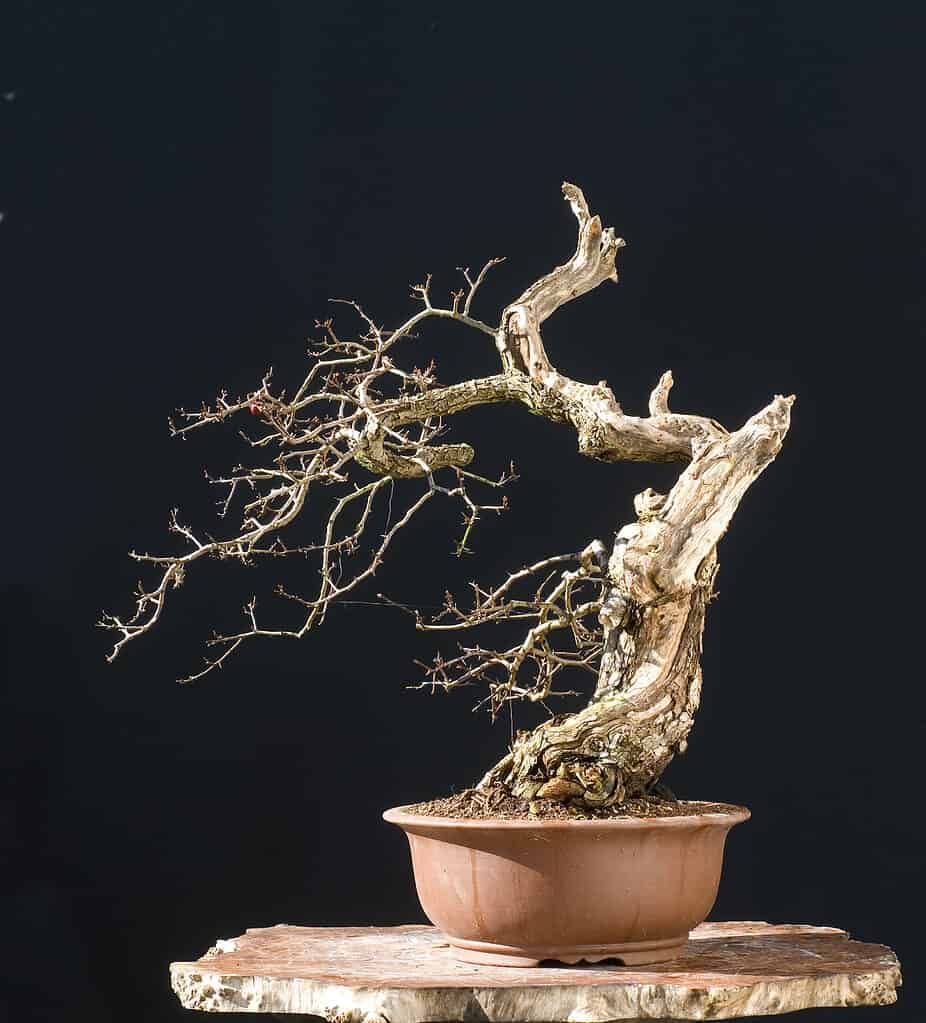
Use twig shears or a leaf cutter to defoliate your Bonsai tree, and ensure that they are sharp as well as sanitized first!
©Walter Pall/Shutterstock.com
If you are ready to redesign your Bonsai tree and have a species that may benefit from defoliation, here’s how to accomplish this intricate process. Make sure it’s summertime first, and don’t forget to have a bit of fun!
Get Your Tools
You can’t just use your kitchen shears to trim a Bonsai tree. Having a proper set of tools is step one in the defoliation process. Use twig shears or a leaf cutter to defoliate your Bonsai tree, and ensure that they are sharp as well as sanitized first!
Determine What You Want to Accomplish
Defoliation is as much an art form as wiring. You don’t have to completely defoliate your entire specimen in order to encourage smaller leaf growth. Determining what you want to accomplish through defoliation is another step in the process. Do you want to redirect growth to one specific section of your Bonsai tree? Or do you want the entire tree trimmed so that new, smaller leaves can take over? Inspect your Bonsai tree from all angles and determine what you want most!
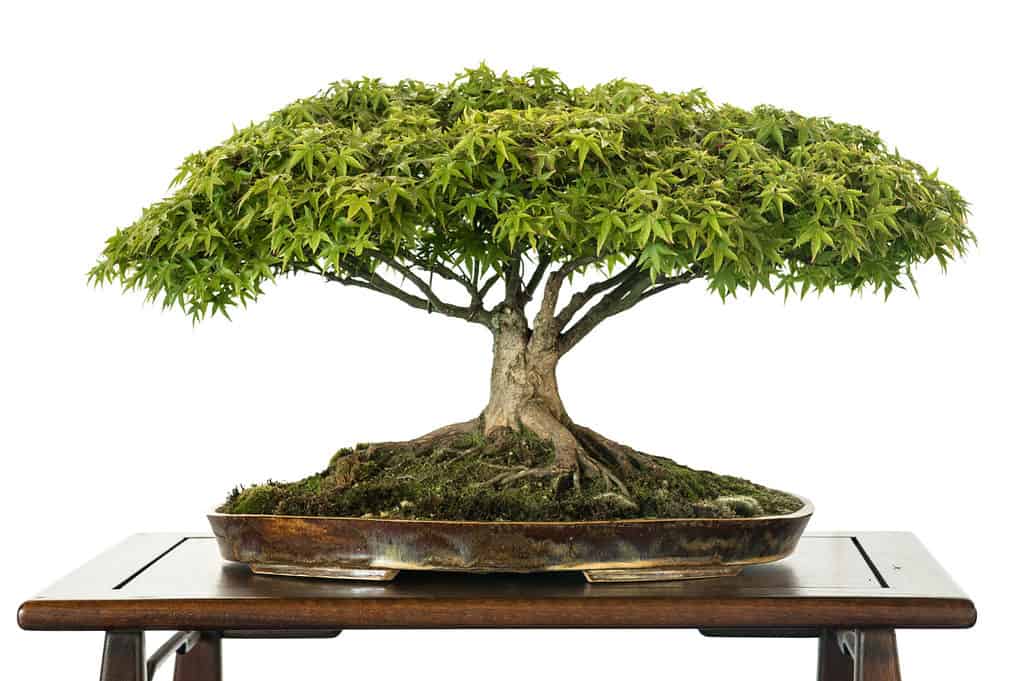
Once you have trimmed your Bonsai tree, you should watch it carefully for signs of damage.
©Bernd Schmidt/Shutterstock.com
Trim Leaves with Care
You don’t want to remove entire branches during the defoliation process– that’s what pruning and shaping are for. Instead, using your leaf cutters, you should trim your Bonsai tree leaves at the very base of the leaves, leaving most of the stem intact. While this may differ depending on the type of tree you’re dealing with, only removing the leaf rather than the stem is a safe bet!
Watch for Signs of Damage
Once you have trimmed your Bonsai tree, you should watch it carefully for signs of damage. Depending on how much you defoliated, these signs may be more obvious than others. So long as you timed your defoliation process correctly and trimmed with care, your tree should bounce back and produce more leaves in no time!
Interested in brushing up on your Bonsai tree knowledge and care? Check out some of our other Bonsai tree guides below!
Up Next:
- The Best Soil for Bonsai Trees
- How to Properly Place a Bonsai Tree
- Bonsai Styles: Everything You Need to Know
The photo featured at the top of this post is © Walter Pall/Shutterstock.com
Sources
- Masakuni Kawasumi III, Available here: https://books.google.com/books?hl=en&lr=&id=tZM_J5Y4JSgC&oi=fnd&pg=PA8&dq=defoliate+bonsai+tree&ots=KwmY1rMEus&sig=UXcfOsSQba6ryfN7OPcd1M32Cdw
Thank you for reading! Have some feedback for us? Contact the AZ Animals editorial team.



